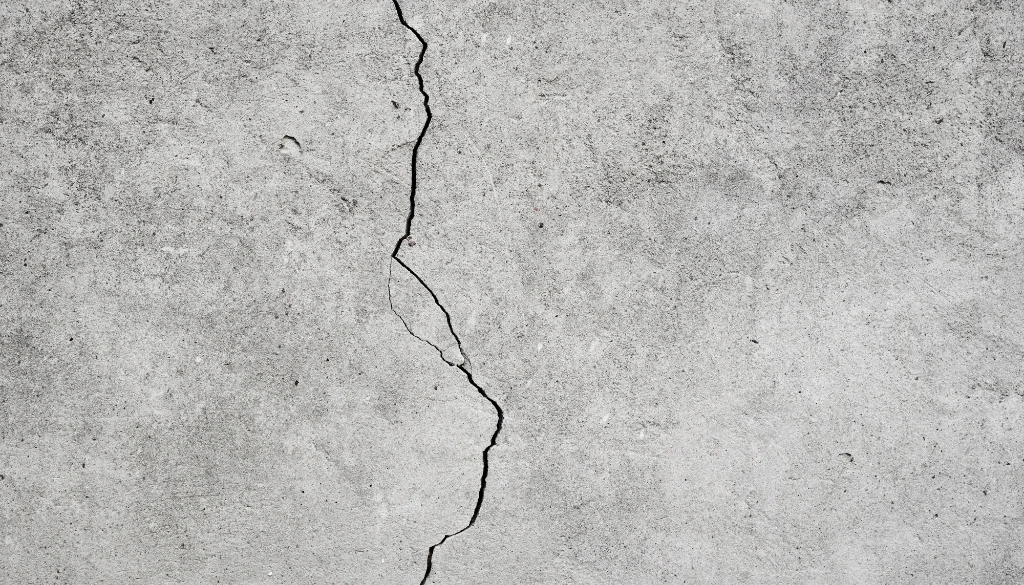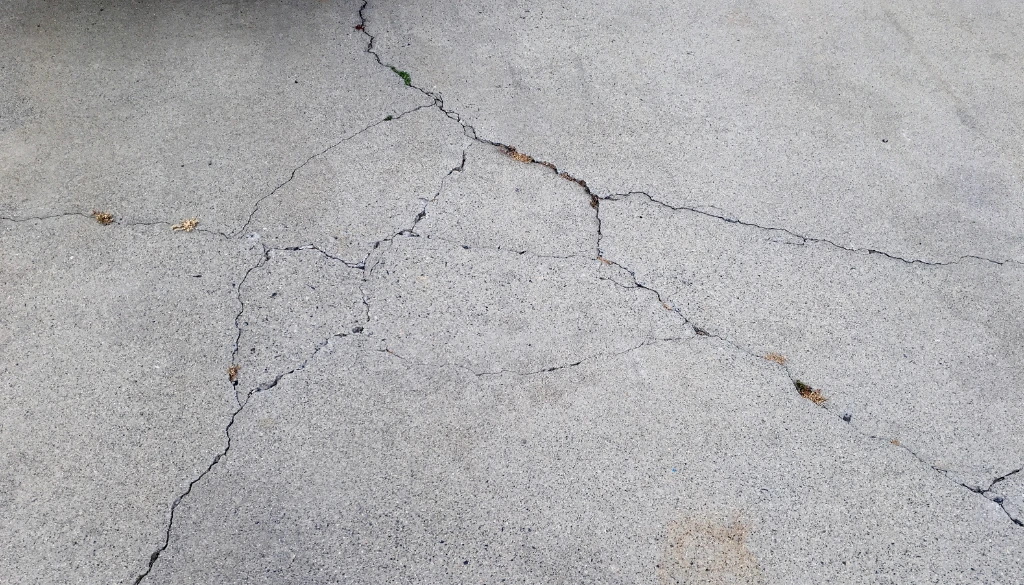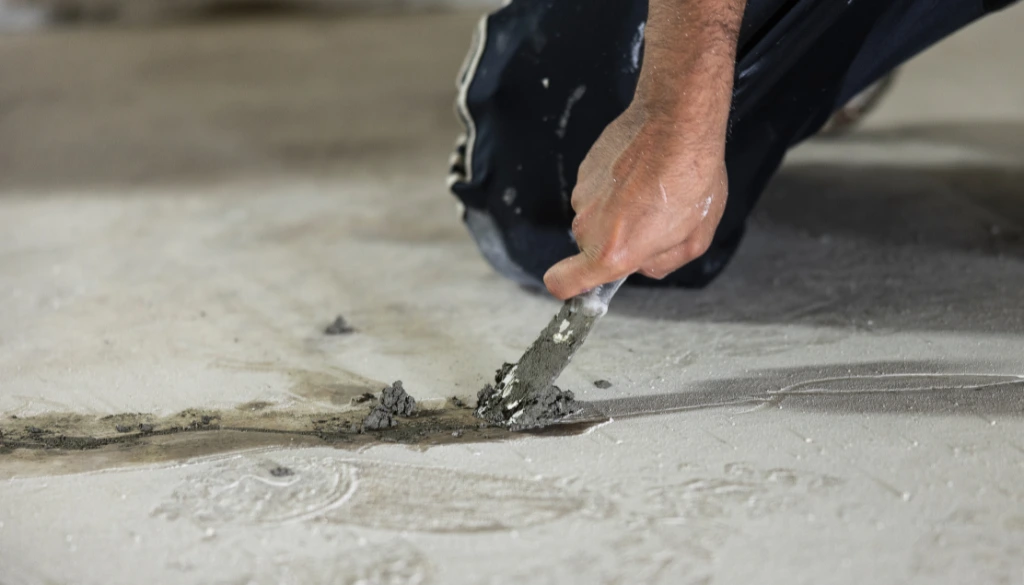Cracks in your basement floor can either be harmless or point to more serious issues, such as foundation settling, hydrostatic pressure, or soil movement. While hairline cracks do not normally need repairs, larger cracks, heaving, or sinking slabs may indicate serious issues that call for professional help. Inadequate drainage, freeze-thaw cycles, and plumbing leaks could further aggravate these cracks, causing water intrusion and result in structural damage.
DGI Waterproofing specializes in professional basement crack repair and waterproofing throughout Toronto, Vaughan, Mississauga, Hamilton and other areas in the GTA. Book your free inspection today!
Table Of Contents
1. Are Cracks in Your Basement Floor Serious?
When Basement Floor Cracks Are NOT Serious
When Basement Floor Cracks ARE Serious
2. What Causes Cracks in Basement Floors?
3. Types of Basement Floor Cracks and What to Do About Them
Are Cracks in Your Basement Floor Serious?
Not all cracks in your basement floor are serious, but some can lead to bigger problems if left unaddressed. Here’s how to determine whether you should be concerned:
When Basement Floor Cracks Are NOT Serious
- Hairline cracks: These small, superficial cracks occur when the concrete shrinks during curing and do not affect your home’s structural integrity.
- Minor settling cracks: Over time, all homes experience minor settling, which can cause thin cracks that are usually not a cause for alarm.
- Spalling or flaking: This is often cosmetic and occurs when the surface of the concrete was improperly mixed or cured.
When Basement Floor Cracks ARE Serious
- Cracks wider than 1/8 inch: These can allow moisture, radon gas, and soil gases to seep into your home, leading to mould growth and poor air quality inside your home.
- Cracks with heaving: If a section of your basement floor is rising or cracking in a circular pattern, the soil underneath may be expanding, which could cause structural damage.
- Uneven cracks or sinking slabs: If the crack is causing sections of your basement floor to be uneven, it may be a sign of soil erosion or improper foundation support.
- Wet or mouldy cracks: Any crack that allows water to seep into your basement can lead to flooding, mould problems, and further foundation damage.
If you notice any of these, please call the team at DGI Waterproofing as soon as possible!

What Causes Cracks in Basement Floors?
There are a lot of reasons for basement floors to crack. In order to find the best solution, you first need to understand what caused the problem.
1. Shrinkage and Drying Concrete
Concrete naturally shrinks as it dries, and hairline cracks are usually the result. These are generally not a problem, but if excessive shrinkage occurs then larger cracks may develop over time. If poor curing techniques were used or if the concrete mix had too much water in it there will be a higher chance of shrinkage and therefore cracks.
2. Foundation Settling and Soil Movement
As a home settles, uneven movement in the soil beneath the foundation can cause cracks to develop. Differential settlement – where part of the foundation settles faster than another – can create serious structural concerns. Poorly compacted soil, changes in moisture levels, or underground voids can exacerbate settling issues, leading to more severe cracks.
3. Hydrostatic Pressure (Water Pressure in Soil)
Too much water in the soil around your foundation increases pressure against the concrete, leading to cracks. This is made worse by inadequate drainage, heavy rainfall, and poor land grading. If water is unable to drain properly, it accumulates and pushes against the basement floor, forcing water through weak points and creating cracks over time.
4. Freeze-Thaw Cycles
In colder climates like Toronto, water in the soil freezes and expands during winter, putting pressure on the basement floors. When it thaws, the soil contracts, over time leading to cracks. This repeated expansion and contraction stresses the concrete slab, eventually leading to cracks that worsen with each seasonal change. This is particularly problematic in regions having a high percentage of clay content in the soil, which retains moisture.
5. Plumbing Leaks and Poor Drainage
Undetected leaks from pipes under your basement can soften and erode soil, leading to foundation movement and cracks. Persistent moisture weakens the surrounding soil and can result in sections of the basement floor sinking or shifting. A sewer or water line leak can add excessive moisture to the soil, increasing hydrostatic pressure that may cause further damage.
6. Poor Concrete Mixing or Improper Curing
Too much water in the concrete mix or poor curing can make it more susceptible to cracking and flaking. Inconsistent curing temperatures, excessive drying, or improper finishing techniques can also weaken the concrete, making it more prone to early deterioration. The use of poor materials or inadequate reinforcement of the slab can also lead to early cracking.

Types of Basement Floor Cracks and What to Do About Them
1. Hairline Cracks (No Repair Needed)
- Cause: Shrinkage during concrete curing.
- What to Do: No action is required unless water is seeping through. You can monitor for changes over time. However, if moisture becomes an issue, consider sealing with a waterproofing solution.
2. Cracks with Heaving (Call a Professional)
- Cause: Expansive clay soil or frost heaving causing sections of the slab to rise.
- What to Do: Call a professional to evaluate the soil conditions and recommend solutions like underpinning or soil stabilization. Delaying repairs could worsen the issue and lead to further structural damage.
3. Uneven Cracks and Sinking Slabs (Repair Needed)
- Cause: Foundation settlement, soil erosion, or poor compaction beneath the slab.
- What to Do: DGI Waterproofing can level and stabilize your floor using high-density polyurethane injections (PolyLevel) to lift and secure the slab. This method is less invasive than traditional concrete replacement and provides long-term stability.
4. Wall-Floor Joint Cracks (Seal for Water Protection)
- Cause: Shrinkage or separation between the basement floor and foundation wall.
- What to Do: These cracks should be sealed to prevent water intrusion. We offer professional waterproofing solutions that to manage excess moisture effectively.
5. Cracks Wider than 1/8 Inch (Seal to Prevent Moisture and Radon Exposure)
- Cause: Larger shrinkage cracks, poor soil conditions, or minor foundation movement.
- What to Do: Seal these cracks to prevent water and gas infiltration. DGI Waterproofing offers professional-grade crack sealing services that provide long-lasting protection, reducing the risk of basement flooding and air quality issues.
6. Spalling or Flaking Concrete (Aesthetic Fixes Available)
- Cause: Poor concrete mix or improper curing, leading to surface deterioration.
- What to Do: Consider either concrete resurfacing or installing waterproof basement flooring to improve appearance and prevent further flaking. Proper sealing and finishing techniques can also help extend the life of the basement floor.
Basement floor cracks are common, but not all of them require immediate action. By understanding the causes and types of cracks, homeowners can identify warning signs and take appropriate steps to protect their homes from water damage and structural issues.
If you’re unsure about a crack in your basement, contact DGI Waterproofing for expert advice and long-term solutions.
Protect your home today, schedule your FREE inspection!
